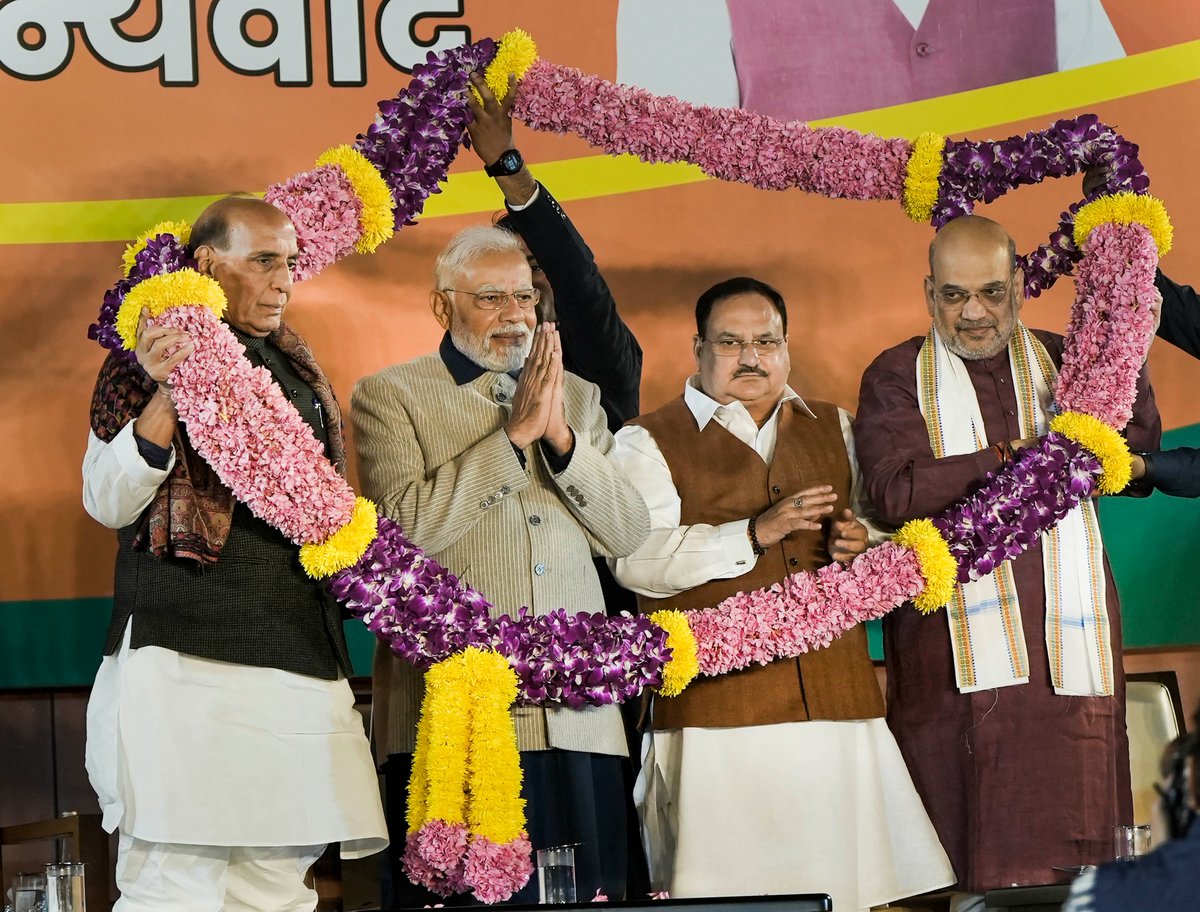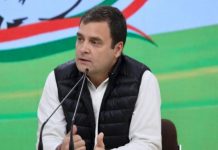
There sure were issues besetting the BJP in Gujarat ranging from unemployment, inflation to exam paper leak etc. But the overriding factor towering above all else was Modi’s larger than life persona
If there is any one party that has turned the anti-incumbency factor on its head it is the BJP. It would also not be incorrect to say that it has somewhat changed the definition. Gone are the days of a pattern, so to say or the alternate government syndrome. Recent and not to recent trends have demonstrated that those in power can continue to remain in power for years on end. The reasons could be different but the outcome can favour one Party for several terms.
A case in point are the results in Gujarat wherein the BJP is celebrating its seventh consecutive win and has put pollsters and analysts on the backfoot.
The recent victory has matched the feat of the Left Front which was in power for seven consecutive terms in the state of West Bengal: from 1977 to 2011 when the diminutive Mamata Banerjee ousted the giants almost single-handedly. This is a comparison which the BJP will certainly not gloat over given that the Left and the BJP are daggers drawn.
The fact that BJP would win was a foregone conclusion. Losing Prime Minister Narendra Modi’s home state was, in a sense, unthinkable even though there were opinions to the contrary.
One view that had many takers was that while the BJP would win, it would lose some seats as compared to its previous tally: “People are fed up” said critics “and the Modi wave is on the wane”. Wishful thinking though because while this did not defy logic, it certainly did contradict ground reality. Given the BJP’s spectacular victory, going into the reasons, at this point, may just be an academic exercise.
There sure were problems ranging from unemployment, inflation to price rise to exam paper leaks, postponement of government recruitment examination to discontent among farmers, land acquisition due to upcoming government projects and so on and so forth.
But the overriding factor towering above all else is Modi’s larger than life persona. This works like nothing else does, more in Gujarat than in any other state. Therefore, for it to pay dividends where Modi ruled as Chief Minister for well over a decade was and should have been a foregone conclusion. Hence the surprise was not the victory or BJP getting another term but the number of seats it bagged.
It is here that the debate on anti-incumbency kicked in. It was not about winning or losing but about the number of seats the BJP would win. The consensus: win it would, but with a reduced number of seats. Reason: Anti-incumbency: after all for how long can they afford to rule and that too with a record number.
It is this argument that the recent results in the state of Gujarat turned on its head. The BJP not only bettered its previous record but won impressively. It was its best ever performance in Gujarat: 156 seats in the 182 member assembly.
That apart it is a marked improvement over its 2017 tally where it was unable to reach three digits: its tally remained at 99. This was described as its worst tally since 1995. Worse still, it was only 21 seats ahead of the Congress Party. Probably it is this which hurt more than the Party not being able to cross the 100-digit mark.
That notwithstanding, the BJP seemed desperate to reach the three digit figure. Not that it was a magic-number but it was one that could at least be perceived as a face-saver. Therefore when it failed to get it on its own, it took help from an independent candidate who “pledged support” to the dwindling fortunes of the saffron Party. The three digit tally was more of a psychological victory for the BJP.
But this time around, the story is completely different. Everything went the BJP way and the numbers stumped even the best of analysts.
So people sit up and ask: what is it that works for the BJP? Is it governance? Is it intent? Is it the Hindutva hard-sell? Is it saying what the majority community wants to hear? Or is it polarisation? While it is tough to segregate one from the other or club them together, the fact remains that it is a personality cult that does the trick for the BJP. Simply put, it is Modi that works. If it is his personal charisma that invades minds, his work on the ground pays dividends.
Decoding the first, it is a fact that Modi’s personal charisma works like nothing else does.
Critics have often dismissed it as more hype than substance, as it were.
Equally it is true that when Modi speaks everyone sits up and listens. And his words, promises and claims, however hollow and exaggerated they may be, leave an indelible mark in the minds of an average voter, particularly in Gujarat which apart from being Modi’s home state is also one which he has governed; and one where his policies of development scored over divisive and communal politics.
That apart, one must concede that many of the pro-poor schemes launched by the Modi-led government at the Centre have worked to the Party’s advantage.
But this is not to say that the BJP rank and file was not shaky or nervous about the poll outcome in Gujarat. If that were not so, Modi would not have campaigned as vigorously as he did addressing one meeting after another and storming the state with rallies and road shows. If reports are anything to go by, Prime Minister Narendra Modi’s 50 kilometre roadshow in Ahmedabad was the “longest and largest” in the country. So if one were to sum up the Gujarat victory it is the original Modi hai to mumkin hai slogan finding resonance here.
At this point, one may stop to ask: if Modi is BJP’s trump card as Gujarat results have demonstrated, then why did it lose Himachal Pradesh?
There are no easy or straight answers for this except the age-old reasons be it infighting, factionalism or anti-incumbency.
Himachal Pradesh is among those states which traditionally moots for an alternative Party in every election. It is as the Himachalis, or natives say the “rivaaz” or tradition in this laid-back state.
Add to this, the heavyweights pulling in different directions: Party President J.P.Nadda, Union Minister Anurag Thakur or now outgoing Chief Minister Jairam Thakur looking after their respective camps. More importantly, the Party did not throw its weight behind the hill state as it did in Gujarat. Prime Minister Modi did campaign but it was nothing compared to the carpet bombing in Gujarat. This was clearly because the BJP could not afford to have a poor showing there at any cost.
That Gujarat was a prestige battle is a given and particularly this time around because these state elections are perceived to have a bearing on the forthcoming general election in 2024. Therefore the message from Gujarat is more important than one emanating from Himachal Pradesh or from the bypolls that were held alongside be it in Uttar Pradesh, Chhattisgarh, Rajasthan or Odisha among others.
Consequently, the BJP is upbeat because Gujarat’s spectacular win belies all talk of the Modi-wave being on the wane. If anything the results have demonstrated that the going is good, and as of now 2024 is for the BJP “a done-deed” as it were.
Having said that, there is also a message for the Congress. Its victory in Himachal Pradesh and its increasing the tally of the states it now rules, however insignificant, is something it can work towards and cash in on.
Thanks to this election, if 2024 means good tidings for the BJP, the Congress too can set its house in order and hope to reap the benefits of its Himachal-win. And, to borrow a phrase, its time begins now.













